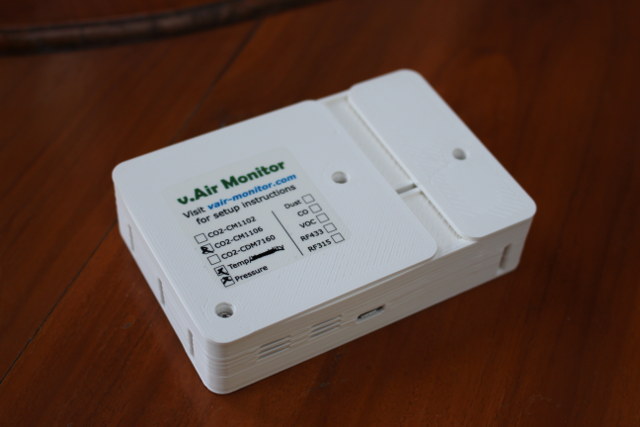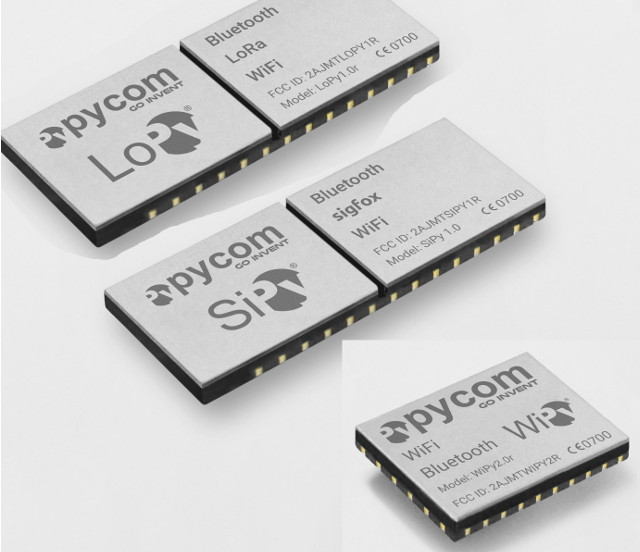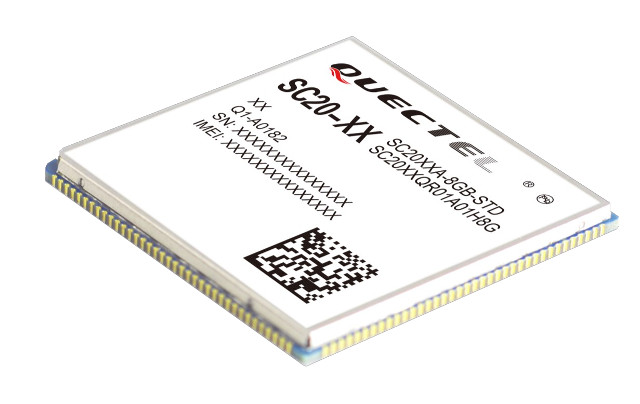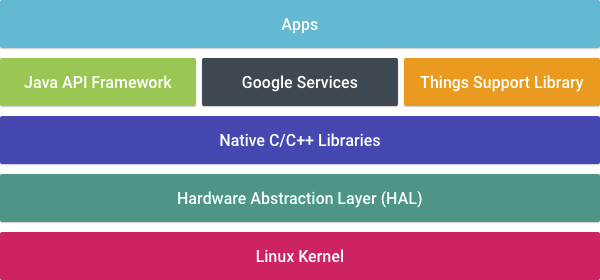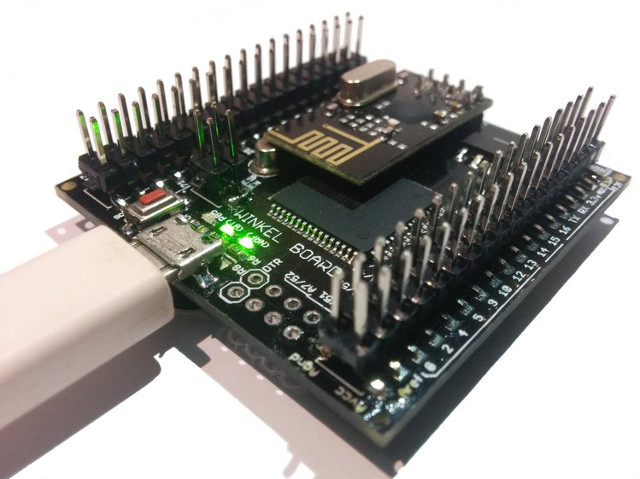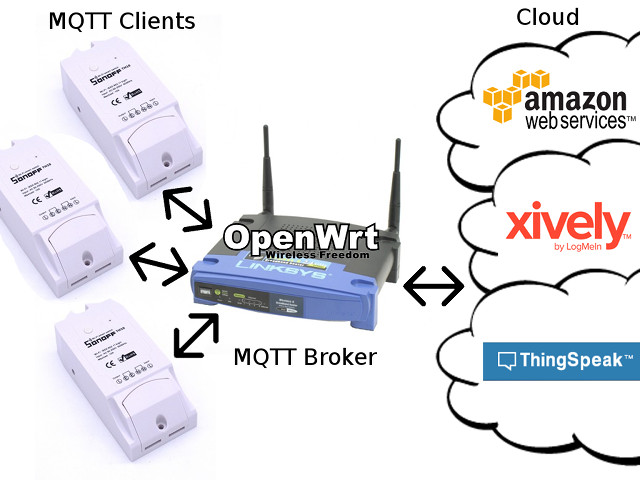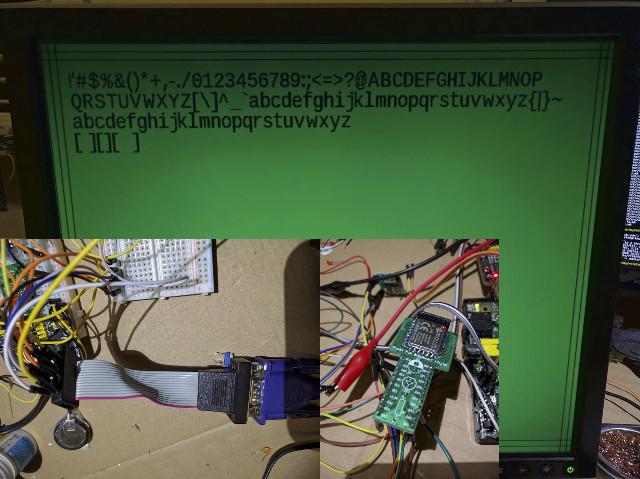The mailman delivered two parcels today, and interestingly enough they have a similar functionality measuring air quality and environmental data such as temperature. The first package was ITEAD Studio Sonoff SC environmental sensor with ESP8266, an Atmel MCU, DHT11 temperature & humidity sensor, a dust detector, a light sensor, and a microphone, while the second was v-Air Monitor vThings CO2 monitor v3 also based on ESP8266 with a CO2 sensor and other optional sensors. I’ll test both with their stock firmware later on, but today I’ll have a look at the hardware design. v-Air Monitor vThings CO2 monitor specifications While I’ve already written about Sonoff SC, it’s the first time I cover v.Air Monitor products, so let’s start with the specifications of vThings CO2 Monitor v3: SoC – Espressif ESP8266 WiSoC Connectivity 802.11 b/g/n WiFi Optional RF315 / 433 MHz RF module Sensors CO2 Sensor (one of them) CM1106 NDIR […]
Pycom To Sell WiFi, BLE, LoRa and Sigfox OEM Modules for Your Own Hardware Projects
Pycom is the company making some relatively popular IoT boards programmable with Python such as WiPy, LoPy, SiPy, and soon FiPy, supporting respectively WiFi+BLE, LoRa+WiFi+BLE, Sigfox+WiFi+BLE, and for the latter all four plus LTE CAT M1/NB1. Those little boards are great for personal projects and/or to experiment, but for those of you who would like to integrated IoT connectivity into your own hardware projects, Pycom will soon launch three OEM module for corresponding to WiPy, SiPy and LoPy connectivity featues with respectively W01, S01 and L01 modules. Key features: W01 WipY 2.0 OEM Module – Dual network BLE and WiFi – 7.95 Euros L01 LoPy OEM module – LoRa, WiFi and Bluetooth – 14.95 Euros S01 SiPy OEM module – Sigfox, WiFi and Bluetooth; Available in both 14dB (for Europe) and 22dB (outside Europe) version for respectively 14.95 and 19.95 Euros All three models have basically the same functionality as […]
Ambiq Micro Introduces Ultra-Low Power Apollo 2 Cortex-M4F MCU Consuming Less than 10 μA/MHz
Last year Ambiq Micro unveiled their Apollo Cortex-M4F MCU with Cortex M0+ energy efficiency thanks to operation in sub-threshold voltage (< 0.5 V), and the MCU is said found in Matrix Powerwatch, a fitness tracker powered by body heat that you never need to charge. The company has recently announced a new version of the micro-controller with Apollo 2 MCU with better maximum performance thanks to a higher maximum clock speed (48 MHz vs 24 MHz), and higher efficiency (10 μA/MHz vs 30 μA/MHz @ 3.3V). Apollo 2 MCU key features and specifications: Ultra-low supply current <10 μA/MHz executing from flash at 3.3 V <10 μA/MHz executing from RAM at 3.3 V ARM Cortex-M4 Processor up to 48 MHz with FPU, MMU, wake-up interrupt controller with 32 interrupts Ultra-low power memory Up to 1 MB of flash memory for code/data Up to 256 KB of low leakage RAM for code/data […]
Quectel SC20 Smart LTE Modules with WiFi, BLE and GPS Run Android 5.1
Google may just have released Android Things operating systems for IoT applications, but its big brother – Android – has already gotten into some other IoT systems such as Quectel SC20 module powered by a Qualcomm processor and supporting LTE, WiFi, Bluetooth LE, and GNSS functions. Quectel SC20 comes in different flavors to cater for various markets, but all module share most of the same specifications: SoC – Unnamed Qualcomm processor System Memory – TBD Storage – 8GB flash Cellular Connectivity – FDD LTE, TDD LTE, TD-SCDMA, EVDO/DCMA, WCDMA, and GSM; antenna: MIMO 2×2, supports Rx-diversity Other Wireless Connectivity WiFi – 2.4GHz 802.11b/g/n (SC20-CE/-W); Dual band 802.11a/b/g/n/ac (SC20-E/-A/-AU/-J) Bluetooth 2.1+EDR/3.0/4.1 LE GNSS – GPS, GLONASS, and BeiDou Interfaces LCD – 4x lanes MIPI-DSI, 1.5Gbps each, HD (720p) @ 60fps Camera – MIPI-CSI, up to 1.5Gbps per lane, supports two cameras 2-lane MIPI_CSI for rear camera, up to 8MP 1-lane MIPI_CSI […]
Android Things OS for the Internet of Things Supports Raspberry Pi 3, Intel Edison, and NXP Pico Boards
Google introduced Project Brillo a little over a year ago, an operating system based on Android, but with a smaller footprint optimized for Internet of Things applications. Brillo has now just become Android Things OS, with Google releasing a developer preview of Android Things working on Raspberry Pi 3, Intel Edison, and NXP Pico boards. The company has also updated the Weave platform to simplify connection of all types of devices to the cloud, and interaction with services like the Google Assistant. The Weave Device SDK currently supports schemas for light bulbs, smart plugs, switches, and thermostats, with more type of device supported in the future, as well as a mobile app API for both Android and iOS. Using an Android based OS instead of a pure Linux OS should make it easier for Android app developers to create smart devices thanks to the use of familiar Android APIs and […]
$24 Winkel Arduino Compatible Board Includes WiFi, Bluetooth, 2.4 GHz RF, and an RTC (Crowdfunding)
There are plenty of Arduino compatible boards with WiFi based on ESP8266 WiSoC going for around $5 to $10, and with ESP32 processor, we are starting to have $15 to $20 boards with both WiFi and Bluetooth, but while ESP-IDF SDK has been progressing nicely, some parts of Bluetooth functionality are still not implemented. Winkel board offers an interesting alternative by offering WiFi, Bluetooth, 2.4GHz ISM, and an RTC for $24. Winkel board specifications: MCU – Microchip/Atmel ATmega128 MCU @ 16 MHz with 128KB flash memory, 4KB SRAM, 4KB EEPROM Connectivity WiFi 802.11 b/g/n via ESP12E module based on ESP8266 Bluetooth 2.0 + EDR via HC-05 module RF Radio – NRF24l01 2.4 GHz ISM radio. (Note: It might be possible to use it for Bluetooth LE connection, see here and there). I/Os (through both Atmel MCU and ESP8266) 38x Digital I/Os 7x PWM Digital I/Os 8x Analog Inputs USB – […]
How to Use Sonoff POW ESP8266 WiFi Power Switch with MQTT and ThingSpeak
ITEAD Studio’s Sonoff is a family of cheap home automation products based on ESP8266 WiSoC, and I’ve already tested Sonoff TH16 wireless switch with a humidity and temperature sensor using the stock firmware and eWelink app for Android or iOS. It works, but up to recently it required a registration to a cloud service (the company will now allow use from the local network), and the source code is closed. So for the second device under review, namely Sonoff POW wireless switch with a power consumption monitor, I decided to install ESPurna firmware working on ESP8266 Sonoff devices and NodeMCU, as it’s open source, supports Sonoff POW natively, includes a web interface to control the device from the LAN, and includes an MQTT client. MQTT (Message Queuing Telemetry Transport) is a lightweight publish/subscribe messaging protocol used to control IoT sensors and devices, and it’s a popular method to gather data […]
VGA Output Hack on $2 PADI IoT Stamp & Other Realtek RTL8710AF Modules
It’s pretty amazing what you can do with those cheap WiFi modules coming from Espressif and Realtek. You may remember CNLohr getting ESP8266 to broadcast video to your TV though NTSC, and that was impressive. But developer kissste, who has been very active since the announcement of a $2 Realtek RTL8710 module, has now developed a VGA driver demo for Realtek Ameba WiFi SoCs, and successfully tested it on Pine64 PADI IoT Stamp. Just like on ESP8266, there’s no hardware display block on RTL8710AF, RTL8711AF, and RTL8195AF SoCs, so instead he had to connect the signals to GPIOs with the video signal connected to GA1 via a resistor, H-Sync to GC2, and V-Sync to GA5. Video and H-Sync data is actually transfered over an SPI connection using DMA transfer for better performance. Normally the video signal for VGA is divided into red, green, and blue signal, so I understand he mixed […]


